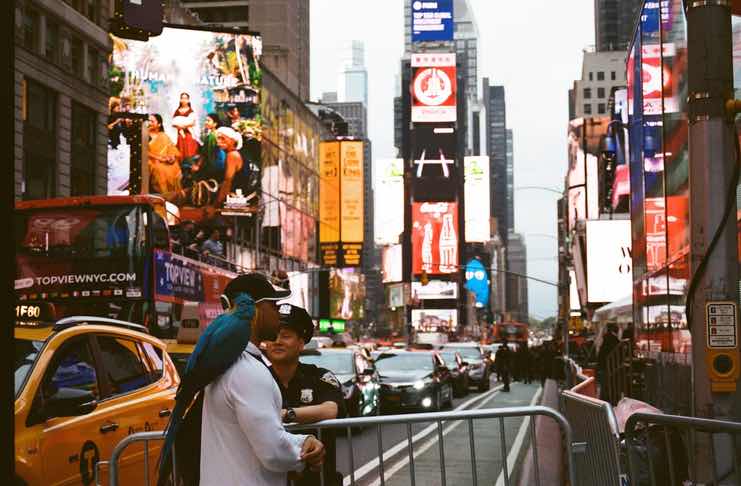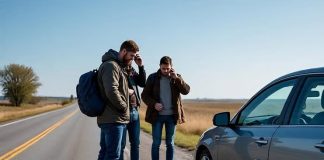I’ve traveled across the U.S. for the past 13 years, hitting both famous tourist traps and those off-the-beaten-path wonders. If there’s one thing I’ve learned, it’s this: some places are just magnetized for accidents. The reasons aren’t always obvious, but they’re there—lurking behind the neon lights of Vegas, the sweeping cliffs of California, and the deceptively calm waves of the Outer Banks. As part of our travel blog, let’s dig into the factors that make some holiday destinations riskier than others.
Too Many People, Too Little Awareness
Some cities weren’t designed to handle an endless wave of selfie-snapping tourists. A prime example? Las Vegas, Nevada. The Strip is a chaotic blend of foot traffic, drunk drivers, and distracted pedestrians who think a flashing crosswalk sign grants them immortality. In 2023 alone, pedestrian deaths in Clark County spiked significantly (source). It’s the perfect storm: thousands of visitors unfamiliar with their surroundings, alcohol in their veins, and a false sense of security in a city built to dazzle.
And it’s not just Vegas. Times Square, New York, sees an influx of 330,000 people daily. Add a few rogue cab drivers, erratic cyclists, and tourists stopping mid-street for a photo, and you have a recipe for disaster.

Before we delve into more reasons behind these dangerous places, let’s make sure you know how to prepare for your road trip this year.
Safety Tips for Your Road Trip
Road trips are an adventure—until they’re not. If you’re heading into unfamiliar territory, these safe driving tips could be the difference between a great story and a cautionary tale:
- Plan Ahead – Check for road closures, weather forecasts, and local traffic laws before you go.
- Watch for Fatigue – Long drives and lack of sleep can be as dangerous as drunk driving. Swap drivers or take breaks.
- Stay Sober – It should go without saying, but DUIs spike in vacation spots for a reason.
- Be Wary of Wildlife – Areas like Yellowstone and rural mountain roads are home to animals that don’t obey traffic signals.
- Emergency Kit is a Must – A first-aid kit, flashlight, water, and phone charger could save you in a pinch.
For more comprehensive road safety info, check out the National Highway Traffic Safety Administration.
The Perils of Party Culture
Some destinations are famous for their nightlife, and where there’s heavy drinking, there’s a rise in injuries. Miami Beach, Florida, is a prime example. Spring Break turns the area into a sea of intoxicated twenty-somethings who make terrible decisions. According to government statistics, Florida ranked 4th for unintentional drowning deaths among all ages in 2021.
People assume that because they’re on vacation, rules don’t apply. That goes for drinking and driving, swimming after too many shots, or thinking they can outswim an undertow because they once watched Baywatch. Spoiler: they can’t.
Dangerous Adventures and Clueless Tourists
There’s something poetic about standing on the edge of the Grand Canyon, feeling tiny compared to the vastness before you. Less poetic? Falling in. Every year, multiple tourists meet their end by getting too close to the rim for that “perfect shot”. Many are asking if the Grand Canyon has become more dangerous…
Adventure tourism is thrilling but unforgiving. Take Yellowstone National Park—it looks like a serene landscape, but those geothermal features are boiling water. Tourists ignore safety signs and step off trails, resulting in severe burns and even deaths.
Tricky Roads and Reckless Drivers
Driving unfamiliar roads can be disorienting. Now add steep cliffs, hairpin turns, and distracted drivers admiring the view. That’s Pacific Coast Highway (PCH), California. This stunning coastal drive is also among the most dangerous, with frequent accidents from speeding, distracted driving, and foggy conditions.
Another notorious road? Hana Highway, Hawaii. Picture narrow, winding roads, sudden rain showers, and tourists more focused on waterfalls than oncoming traffic. Locals have a love-hate relationship with visitors here, mainly because they tend to drive like they’re starring in a car commercial when they should be cautiously crawling along the bends.
Water Looks Innocent—Until It’s Not
Beaches look peaceful, but they can be merciless. The Outer Banks, North Carolina, is infamous for rip currents that pull even strong swimmers out to sea. The area sees multiple drownings each summer, often because tourists underestimate the power of the ocean.
In Lake Tahoe, California/Nevada, water temperatures stay frigid year-round. Tourists jump in thinking it’s refreshing, only to experience cold water shock, which can paralyze muscles in seconds. Even strong swimmers have drowned here after their bodies betrayed them.
What Can Be Done?
While tourists have a responsibility to stay aware, local governments also play a role. Cities like Vegas and Miami have increased pedestrian safety measures, such as better crosswalk visibility and stricter DUI checkpoints. In national parks, rangers constantly remind visitors to respect safety barriers—though some still learn the hard way.
The bottom line? Awareness is everything. Whether you’re hiking a canyon, driving a cliffside road, or swimming in deceptively calm waters, respect the risks. The best trips are the ones you come back from in one piece.
Have a near-miss story from your travels? Share it in the comments—I’d love to hear what lessons you learned the hard way.










